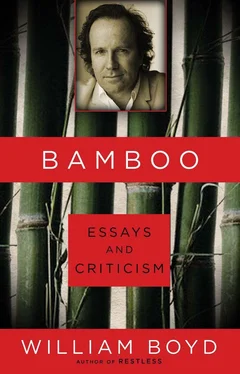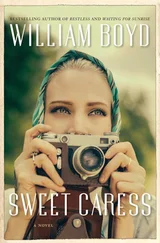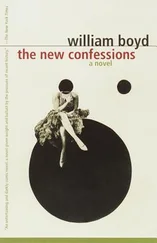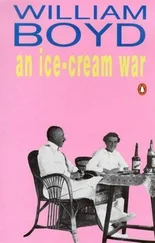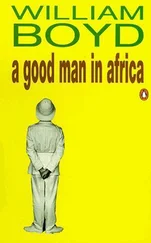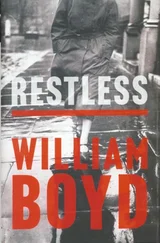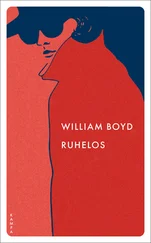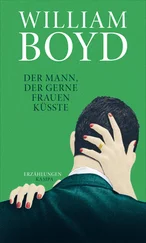F. Fish
The “School” series. These (and the studies for them) are perhaps the most simply hedonistic of Andrews’s paintings. They are limpid, luminescent works and they show off his skills as a colourist to an almost Hodgkinian degree. There is a level of interpretation that one can impose on them — ideas of social order, of uniformity, of predator and prey — but my feeling is that such an attempt at reading these beautiful paintings is burdensome.
G . Good and Bad at Games
I borrowed this title for the first film I wrote. Which must date my initial acquaintance with Andrews’s work fairly precisely, I suppose. I wrote Good and Bad at Games in 1982. The first big Andrews retrospective had been at the Hayward in 1980, ending early in 1981. I didn’t go to the exhibition but I knew of Andrews’s work — but only the “Lights” series — which takes us back to the 70s. But Good and Bad at Games was when I first made my real connection with the man and the work. I liked the ring of the title and applied it literally to my story of hearty public schoolboys and their brutal persecution of an unsporty junior. Andrews’s “games,” however, are social — to do with the games people play at parties. (My film was shown on Channel 4 in 1983—I wonder if Michael Andrews ever saw it?) The gallery of distorted portraits that make up the painting — people squeezed thin or expanding according to the state of their social confidence — has a loose, coincidental connection with my fictional characters and their respective neuroses or swaggering self-assurance. Andrews was a shy man, by all accounts. Shy people often relish the anonymity that a large and noisy party provides.
H. Heads
Andrews’s small portrait heads — studies for uncompleted pictures — or more formal portraits are exemplary. Some of them look like miniature Bacons. Others (Portrait of June, Portrait of Colin St John Wilson) are as good as Graham Sutherland. You wouldn’t think of Andrews as a portraitist of the first rank: his reputation is to do with large-scale landscapes and series. Yet he is, and the portraits show the complete range of his formidable gifts, the full extent of his prodigious artistic arsenal.
I. Impasto
Andrews associated the use of impasto as an illustration of effort — of a layered, scored and thickly furrowed surface as being somehow an analogue of intensity and concentration. Impasto preserved the record of change in the painted surface. Yet he is criticized as a painter of flat surfaces. Indeed, perhaps this is the most serious criticism levelled at Andrews as a major artist. Namely that his use of the spray gun (the airbrush) and of stencils renders his work lifeless in some way — the surface “dead.” And it’s true, to a certain, minor extent. With some paintings (Lights V: The Pier Pavilion , say) you can have your eye two inches from the canvas surface and discover that the paint is applied as evenly and neutrally as household emulsion. But everything Andrews did with paint is highly deliberate, and the use of the spray gun with its implication of industrial effortlessness was essential for the mood and ambience of certain paintings. The same is true for the argument over acrylic paint versus oil. Acrylic is made for the flat surface. But anyone who thinks Andrews avoided oil paint because it was too difficult to manipulate need only look at his little Scottish oil sketches (Mist Clearing, Glenartney, Glenartney, 19 October ’89 , for example) to see his absolute, confident mastery of this medium: oil sketches with all the verve and freshness of a Constable. And later Andrews would use impasto to provide telling contrast: in the huge landscape, A View from Uamh Mhor (1990–91), for example, or the slightly smaller Oare, the Vale of Pewsey (1989–91), Here, in these technically superb oil paintings, the paint is often thinned to near-transparency and the unpainted canvas is allowed to show through. But they also illustrate the way a heavily loaded brush is used to brilliant effect in the details. A smear or thick squiggle of oil and, hey presto, you have a hawthorn hedge or a gorse-filled ravine, or a stream shining silver in a gulley.
J. June
Andrews’s wife, June Keeley, whom he met in 1963. She is present in the first Good and Bad at Games painting — the second ball-like figure on the left. In 1970 their daughter Melanie was born. The postcard reproduction of Andrews’s painting, Melanie and Me Swimming (1978–9), is reputedly the most purchased postcard in Tate Britain.
K. Klee
Paul Klee — not an artist one would instantly associate with Andrews — two different senses of scale, for a start. But they have a lot in common. Both men read widely and thought profoundly about their art, and Klee was an accomplished musician. Andrews was always writing his thoughts down and one wishes he had kept a diary as Klee did. One example. Klee, October 1901: “In the evening there were subdued and serious colour effects of a sombreness and subtlety that one would never believe possible in Italy … There is a moral strength in such colour. I see it just as much as others do. I too shall be able to create it one day. When?” I suspect this was similar to the Ayers Rock effect.
L. “Lights”
The critical consensus would probably regard this series of seven paintings at the centre of Andrews’s working life as his greatest monument. (As I write this I can see out of my study window — with eerie synchronicity — a child’s silver helium balloon flying up into the sky over Radnor Walk, SW3.) Anyway, looking at the series together — as one did at last year’s astounding, never-to-be-forgotten Tate Britain retrospective — both cemented its reputation and exposed its weaknesses. Without the overarching concept — the voyage of the ego (the balloon) — to bind the individual canvases together, some of the paintings might seem less significant. That the series ends with Lights VII: A Shadow is its great strength and advantage. A Shadow —the shadow of the balloon on a stretch of sand, with the sea and the horizon and the sky beyond — is one of the great paintings of the twentieth century, and part of its greatness lies in the difficulty of explaining precisely why this should be so. It’s much bigger than you would expect — which was the first shock I received on seeing it. (An aside: what other modern figurative artist has painted such really large paintings throughout his or her career with such consistent aplomb and authority?) A Shadow is as flat as any of the other paintings in the series — acrylic paint, spray gun — but I think its power lies somewhere in the tension between the serenity of the moment — balloon shadow, sand, sea, sky — and the confused tangle of sea-wrack to the left of the balloon shadow. Andrews apparently created this with tape, dipped in black paint, and draped on the canvas. This juxtaposition of the aleatory and the measured, the messy and the serene seems to me the key to this painting’s quiescent and mesmerizing power.
M. Masterpiece
This is a word that should be used with huge discretion and extremely rarely. Vladimir Nabokov was continually outraged by the way American critics would casually bandy about the word “genius”—as if such people were a dime a dozen. The same caution applies to the appellation of “masterpiece.” In fact, only posterity should be the real judge here but Andrews is often described as a painter who “only painted masterpieces,” probably because his output was comparatively small and possibly because so many of his paintings were on a large scale: their ambition and their near-faultless execution tend to stake a big claim — as well as having the side-effect of scaling down the less well-achieved work of other painters. However, it is true that seeing Andrews’s work over the period of his lifetime one is struck by how memorable so many of his paintings are. Or, to put it another way, how few comparative failures there are. Andrews died seven years ago and we have only had one posthumous retrospective but, as one starts ranking the paintings in order of eminence and importance, one realizes just how many exceptional paintings there are in the oeuvre.
Читать дальше
